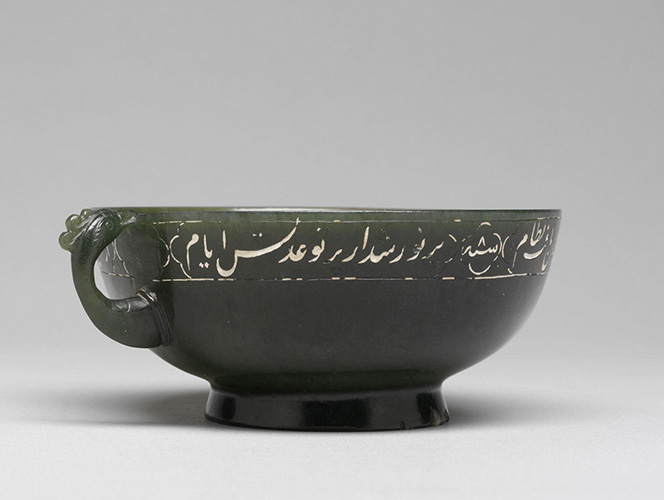Cup of Jamshid
The Cup of Jamshid (Jam’i Jām) is a cup of divination, which in Persian mythology was long possessed by the rulers of ancient Greater Iran. Its name is associated with Jamshid, a mythological figure of Greater Iranian culture and tradition.
Its power and function are somewhat similar to Christian legends surrounding the Holy Grail.
Origin
The cup was discovered in Persepolis in ancient times. There is no record of how it came into existence, but it is recorded as belonging to Jamshid, the fourth ruler of the Pishdadian dynasty of ancient Persia, who ruled from the city of Persepolis.
The legends regarding the cup pre-date Islam, and are Zoroastrian in origin; however, many later Muslim artists produced works based on the themes of the cup.
Function
The cup (Jām) was said to be filled with an elixir of immortality and was used in scrying. All seven heavens of the universe could be observed by looking into it.
The cup was called "The World-Revealing Goblet" in the Persian source texts. The whole world was said to be reflected in it, and divinations within the cup would reveal deep truths. Sometimes, especially in popular depictions such as The Heroic Legend of Arslan, the cup has been visualized as a crystal ball.
Legacy
The cup has been the subject of many Persian poems and stories. Many authors ascribed the success of the Persian Empire to the possession of this artifact. It appears extensively in Persian literature.
- The classic poem Rubaiyat by the 11th century Persian Omar Khayyam.
- The Sawāneḥ by Persian Sufi mystic Ahmad Ghazali.
- In 20th century literature, the cup was mentioned in by one of the founding fathers of Pakistan, Allama Muhammad Iqbal, in his poem Tasvīr-i Dard.
